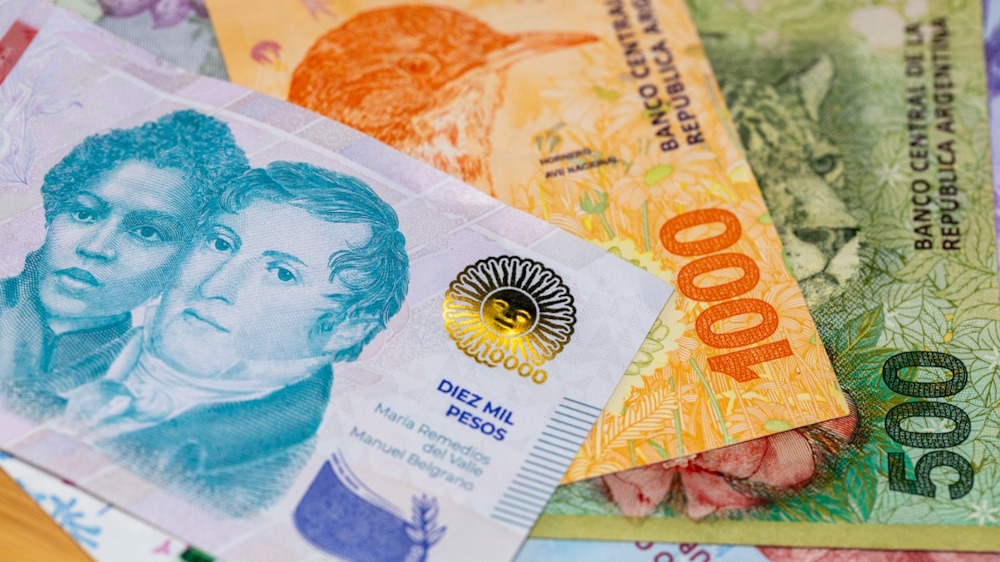The Argentine peso appreciated as bonds and equities experienced a significant decline on Tuesday, following the treasury’s declaration of its intention to intervene in the nation’s foreign exchange market. Market participants and analysts indicated that the action might heighten uncertainty. The U.S. dollar exchange rate commenced the session at AR$1,380, subsequently declining to AR$1,361 by the conclusion of the market, following the Treasury’s dollar selloff.
Finance Secretary Pablo Quirno announced that the Treasury would sell dollars to “ensure liquidity” and guarantee that the market “operates normally.” The announcement indicates a reversal by the government regarding its April decision to permit a free-floating exchange rate. The alteration occurred simultaneously with the execution of a US$20 billion loan agreement with the International Monetary Fund (IMF). The government indicated that the dollar exchange rate would fluctuate within specified upper and lower limits, referred to as bands, contingent upon market supply and demand dynamics. “Now, we have bands within bands,” economist Christian Buteler noted. The agreement with the IMF constrains the government’s capacity to engage in the foreign exchange market. A source from the Economy Ministry informed the Herald that the lender had sanctioned the renewed market intervention on Tuesday. The International Monetary Fund did not provide a response to a request for comment.
Up to this point, the Central Bank and the Treasury have engaged in market interventions through indirect methods, including interest rates that have tripled the monthly inflation rate, participation in the futures market, and the imposition of stricter exchange restrictions on banks. On Tuesday, it was the Treasury that executed the sale of dollars in the market; however, this intervention was facilitated through the Central Bank. This arrangement occurred because the Treasury lacks the authorization to engage in trading. The Treasury holds approximately US$1.7 billion in its Central Bank dollar account. “The decision was surely made to prevent the exchange rate from reaching the upper band of the fluctuation range in the days leading up to the weekend elections,” stated Gustavo Quintana. Pablo Repetto, head of research, informed that the most immediate consequence of the move would be a surge in the EMBI or country risk index, which assesses the probability of a debt default.
The government expressed a strong commitment to maintaining dollar stability “by any means necessary” and indicated that the forthcoming decision was “highly dependent on a not-too-negative result” in the elections. Auxtin Maquieyra, indicated that the dollarization of portfolios has been exerting pressure on the exchange rate as well as on bonds and stocks. “The message is both political and financial: they are seeking to provide some certainty to a market that has seen sharp swings and liquidity gaps in recent days,” Maquieyra stated. In the past week, market analysts have indicated that the administration has been intervening in the foreign exchange market through the Treasury’s foreign currency reserves. Consulting firm Aurum Valores has estimated that the Treasury’s reserves experienced a decline of approximately US$262 million during the initial three weeks of August.
“What is clear is that the Treasury’s role as an actor is now explicit,” Maquieyra stated, noting that the move could moderate exchange rate volatility during the campaign, “although at the cost of accelerating the use of reserves and reducing the room for maneuver towards the end of the year.” Gustavo Ber indicated that the announcement aims to deter future sales that would be necessary should the exchange rate approach the upper limit of the band. “The Treasury is aiming to inhibit the Central Bank from liquidating foreign currency, which would impact reserves, contrary to the accumulation goals desired by investors and also aligned with the IMF,” Ber stated.
Dollar-denominated bonds experienced declines of up to 2%, with the Global 2046 leading the downturn, followed by the Bonar 2041 at -1.8% and the Bonar 2038 at -1.5%. Argentine stocks traded on Wall Street through ADRs experienced declines of up to 7.4%, with Telecom at the forefront, followed by Grupo Supervielle at -5.7% and Grupo Financiero Galicia at -5.3%.

